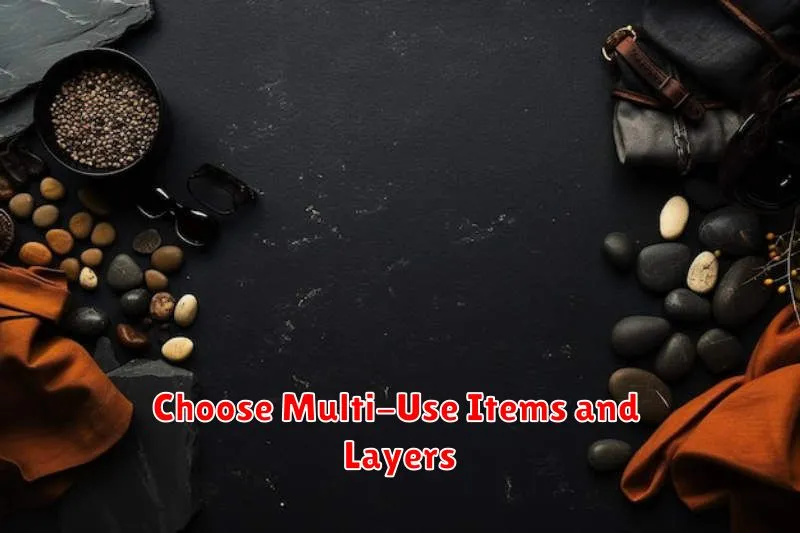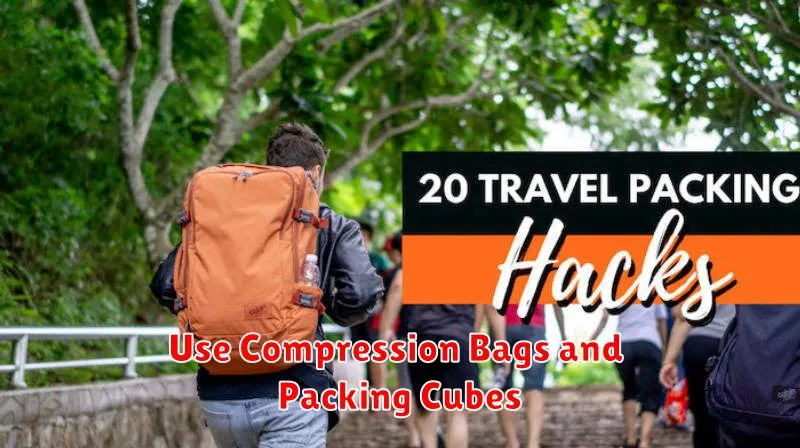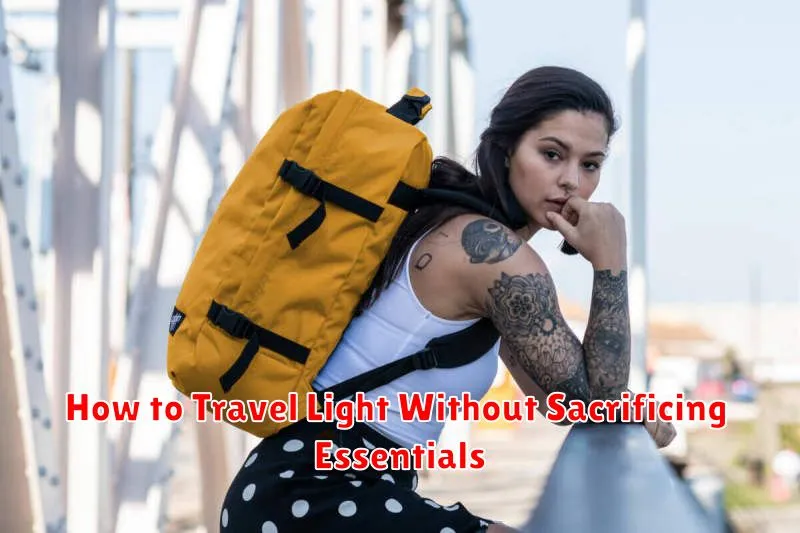Learning how to travel light can significantly enhance your travel experience. Lugging around heavy baggage can be cumbersome and stressful, limiting your mobility and enjoyment. This guide provides practical strategies on how to pack essentials without overpacking, allowing you to embrace the freedom and spontaneity of light travel. Whether you’re embarking on a weekend getaway or a long-term adventure, mastering the art of packing light will transform your journeys. Discover how to prioritize, choose versatile items, and employ efficient packing techniques to maximize space and minimize weight, ensuring you have everything you need without the burden of excess.
Traveling light doesn’t mean sacrificing comfort or preparedness. It’s about making informed choices and packing strategically. This article explores how to identify your essential items, differentiate between needs and wants, and utilize packing methods that optimize space. Learn how to choose lightweight luggage and clothing, minimize toiletries, and leverage travel-sized products. By implementing these techniques, you can experience the numerous benefits of traveling light, including increased mobility, reduced stress, and greater flexibility in your itinerary. Embark on your next adventure unburdened and prepared with these invaluable tips for light travel.
Benefits of Traveling Light
Traveling light offers numerous advantages, making your journey smoother and more enjoyable. One of the most significant benefits is increased mobility. Navigating busy airports, train stations, and city streets becomes significantly easier without the burden of heavy luggage.
Traveling with less also reduces stress. You’ll spend less time waiting at baggage carousels and worrying about lost or delayed luggage. This allows you to focus on enjoying your trip and exploring your destination.
Another key advantage is cost savings. Many airlines now charge hefty fees for checked baggage. By packing light, you can avoid these fees and allocate your travel budget to more enriching experiences.
Furthermore, packing light promotes spontaneity. You’ll be more flexible and adaptable to changing travel plans. It’s easier to hop on a last-minute train or take a detour to an interesting location when you’re not weighed down by heavy bags.
Finally, traveling light can lead to a more authentic travel experience. You’ll be less reliant on taxis and more inclined to walk or use public transportation, allowing you to immerse yourself in the local culture and connect with the destination on a deeper level.
Stick to a Packing List
One of the most effective ways to travel light is to create a packing list and stick to it religiously. A list helps you pre-plan your outfits and avoid impulse packing. It forces you to be mindful about what you truly need versus what you simply want to bring.
Start by considering your destination, the length of your trip, and the planned activities. Write down every item you think you’ll need, then review it critically. Ask yourself: Have I worn this recently? Can this item serve multiple purposes? Can I easily purchase this at my destination if needed?
Categorize your list (e.g., clothing, toiletries, electronics) to stay organized. Consider using a packing list app or template for added convenience. Once finalized, your packing list becomes your guide. Resist the urge to add “just one more thing” at the last minute.
Choose Multi-Use Items and Layers

Packing light requires strategic item selection. Multi-use items significantly reduce bulk and weight. A sarong, for instance, can serve as a scarf, beach cover-up, or even a makeshift pillow. Similarly, a quick-drying travel towel can double as a picnic blanket.
Layering your clothing offers versatility and adaptability to changing weather conditions. Instead of packing bulky sweaters, opt for thin, thermal layers that can be combined for warmth. A lightweight, waterproof outer layer is essential for unexpected rain.
Consider travel-specific clothing designed for versatility. Convertible pants that zip off into shorts, or shirts with roll-up sleeves provide options without adding extra items. Choose neutral colors that can be mixed and matched to create various outfits.
Pack Only What You Absolutely Need
The key to traveling light is ruthless prioritization. Before you even open your suitcase, make a list of essential items. Think about your destination, the activities you’ll be doing, and the expected weather. Be realistic about what you’ll truly use. That extra pair of shoes “just in case” often ends up unused and adds unnecessary weight.
Focus on versatile clothing items. Choose neutral colors that can be mixed and matched to create multiple outfits. A simple black dress can be dressed up for dinner with a scarf or dressed down for sightseeing with comfortable walking shoes. Pack clothes made from quick-drying fabrics that can be easily washed and worn again, minimizing the number of items you need to bring.
Toiletries can take up significant space and weight. Use travel-sized containers or consider purchasing toiletries at your destination. Many hotels provide basic toiletries like shampoo and conditioner, so check beforehand to avoid packing duplicates. Remember the 3-1-1 rule for carry-on luggage regarding liquids.
Use Compression Bags and Packing Cubes

Compression bags and packing cubes are invaluable tools for light travelers. They help organize your belongings and significantly reduce the volume of your luggage.
Compression bags work by removing excess air, shrinking bulky items like sweaters and jackets. This frees up valuable space and helps you fit more into your bag. Be aware that compression bags can wrinkle some clothing items.
Packing cubes, while not compressing air, offer excellent organization. They allow you to compartmentalize your luggage, making it easier to find specific items without unpacking everything. This structured approach also aids in efficient packing, preventing wasted space.
Consider using a combination of both. Employ compression bags for larger, compressible items, and utilize packing cubes for organizing smaller items and maintaining a tidy suitcase.
Minimize Toiletries and Go Solid
One of the bulkiest and heaviest parts of a travel bag is often toiletries. Liquids add significant weight and are susceptible to spills. Switching to solid toiletries is a game-changer.
Consider solid shampoo bars, conditioner bars, and even solid lotion bars. These options are lighter, more compact, and eliminate the worry of leaks. They also often last longer than their liquid counterparts, making them a cost-effective choice.
For items like toothpaste, consider toothpaste tablets. These dissolve in your mouth and offer the same cleaning power as traditional toothpaste without the liquid bulk.
Further reduce weight by using multi-use products. A tinted moisturizer with SPF can replace separate moisturizer, foundation, and sunscreen.
Decant any remaining essential liquid toiletries into travel-sized, reusable containers. Ensure these containers are securely sealed to prevent leaks within your luggage.
Keep Valuables and Documents Organized
Keeping your valuables and documents organized is crucial for stress-free travel. A designated travel organizer can prevent lost items and provide quick access when needed. Consider a small, lightweight organizer with compartments for passports, boarding passes, visas, and other essential documents.
Securely store your passport in an RFID-blocking sleeve to protect against electronic theft. Keep photocopies of important documents separately, both physically and digitally in cloud storage, as a backup in case of loss or theft. This includes your passport, driver’s license, and travel insurance information.
Organize your valuables, such as jewelry and electronics, in designated pouches or compartments within your luggage. Avoid packing high-value items in checked baggage. Consider using packing cubes to further compartmentalize and streamline your belongings.

